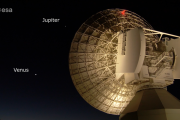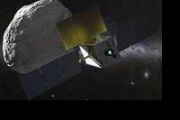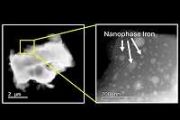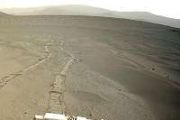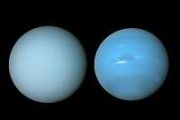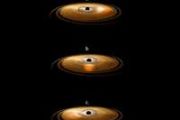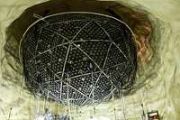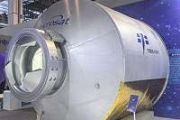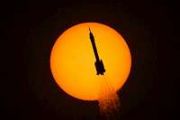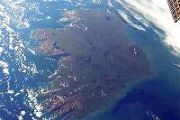
Copernical Team
The secret life of neutrinos
 Neutrinos are cosmic tricksters, paradoxically hardly there but lethal to stars significantly more massive than the sun. These elementary particles come in three known "flavors": electron, muon and tau. Whatever the flavor, neutrinos are notoriously slippery, and much about their properties remains mysterious. It is almost impossible to collide neutrinos with each other in the lab, so it is not
Neutrinos are cosmic tricksters, paradoxically hardly there but lethal to stars significantly more massive than the sun. These elementary particles come in three known "flavors": electron, muon and tau. Whatever the flavor, neutrinos are notoriously slippery, and much about their properties remains mysterious. It is almost impossible to collide neutrinos with each other in the lab, so it is not ALLSPACE to Develop 5G NTN Satcom Integration with ESA Funding
 ALL.SPACE has secured euro 3.42 million from the European Space Agency (ESA) to accelerate its development of 5G Non-Terrestrial Network (NTN) integration. The award comes through ESA's Space for 5G/6G and Sustainable Connectivity programme under the Advanced Research in Telecommunications Systems (ARTES) framework, which promotes cutting-edge satcom innovation.
The funding will enable AL
ALL.SPACE has secured euro 3.42 million from the European Space Agency (ESA) to accelerate its development of 5G Non-Terrestrial Network (NTN) integration. The award comes through ESA's Space for 5G/6G and Sustainable Connectivity programme under the Advanced Research in Telecommunications Systems (ARTES) framework, which promotes cutting-edge satcom innovation.
The funding will enable AL Earth will spin faster marking 2nd shortest day in history
 Scientists predicted that Tuesday will be a fraction of a second shorter than the average day as the Earth's rotation is moving faster.
The international Earth Rotation and Reference System Service expects that Tuesday will be just 1.34 milliseconds shorter than the standard 24 hours.
"We've known about the rotation of the Earth being variable for about a hundred years," said the
Scientists predicted that Tuesday will be a fraction of a second shorter than the average day as the Earth's rotation is moving faster.
The international Earth Rotation and Reference System Service expects that Tuesday will be just 1.34 milliseconds shorter than the standard 24 hours.
"We've known about the rotation of the Earth being variable for about a hundred years," said the NASA's X-59 moves under its own power
 NASA's quest for a quieter supersonic jet passed an early test after its X-59 aircraft was able to taxi at low speed at a manufacturing plant in California.
The space agency on Tuesday announced the latest milestone for NASA's X-59 that is part of its Quesst mission to test the possibility of a supersonic aircraft with more muted sonic booms that will allow less noisy flights over popul
NASA's quest for a quieter supersonic jet passed an early test after its X-59 aircraft was able to taxi at low speed at a manufacturing plant in California.
The space agency on Tuesday announced the latest milestone for NASA's X-59 that is part of its Quesst mission to test the possibility of a supersonic aircraft with more muted sonic booms that will allow less noisy flights over popul York to Acquire Operations to Boost Ground Connectivity and Mission Delivery
 York Space Systems announced that its parent company has signed an agreement to acquire ATLAS Space Operations, a U.S.-based leader in Ground Software as a Service (GSaaS) for satellite communications. The acquisition aims to bolster York's ability to deliver integrated, mission-ready systems by incorporating ATLAS's software-driven ground architecture.
ATLAS will contribute to York's Gold
York Space Systems announced that its parent company has signed an agreement to acquire ATLAS Space Operations, a U.S.-based leader in Ground Software as a Service (GSaaS) for satellite communications. The acquisition aims to bolster York's ability to deliver integrated, mission-ready systems by incorporating ATLAS's software-driven ground architecture.
ATLAS will contribute to York's Gold Watch live: Vega-C to launch CO3D and MicroCarb

ESA launches Vigil to track solar threats from deep space vantage
 Vigil, the European Space Agency's upcoming space weather mission, will be the first satellite to maintain a continuous presence at the Sun-Earth Lagrange Point 5 (L5), providing an unprecedented side view of solar activity. From this strategic location, Vigil will monitor the Sun's surface several days before the same regions rotate into Earth's direct line of sight.
The mission is design
Vigil, the European Space Agency's upcoming space weather mission, will be the first satellite to maintain a continuous presence at the Sun-Earth Lagrange Point 5 (L5), providing an unprecedented side view of solar activity. From this strategic location, Vigil will monitor the Sun's surface several days before the same regions rotate into Earth's direct line of sight.
The mission is design Astronomers discover blazing Betelgeuse has companion star
 Since at least the time of the ancient Egyptians, people across the world have gazed up in awe at Betelgeuse, one of the brightest stars blazing in the night sky.
Now astronomers have discovered that this red supergiant, known to many as the hunter's shoulder in the Orion constellation, is being orbited by a much smaller companion star, a study said on Monday.
It is not the first time B
Since at least the time of the ancient Egyptians, people across the world have gazed up in awe at Betelgeuse, one of the brightest stars blazing in the night sky.
Now astronomers have discovered that this red supergiant, known to many as the hunter's shoulder in the Orion constellation, is being orbited by a much smaller companion star, a study said on Monday.
It is not the first time B TRACERS satellites set to explore solar magnetic reconnection near Earth
 NASA is preparing to launch the Tandem Reconnection and Cusp Electrodynamics Reconnaissance Satellites (TRACERS) mission on July 22 from Vandenberg Space Force Base in California. Led by the University of Iowa and supported by Southwest Research Institute (SwRI), the mission aims to investigate how the Sun's and Earth's magnetic fields interact.
SwRI contributed scientific leadership and d
NASA is preparing to launch the Tandem Reconnection and Cusp Electrodynamics Reconnaissance Satellites (TRACERS) mission on July 22 from Vandenberg Space Force Base in California. Led by the University of Iowa and supported by Southwest Research Institute (SwRI), the mission aims to investigate how the Sun's and Earth's magnetic fields interact.
SwRI contributed scientific leadership and d 












